2022 Lexus NX 350h review: Hybrid’s difficult second album hits all the right notes
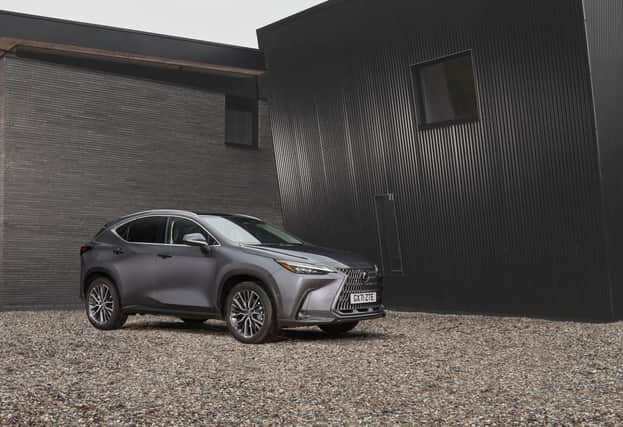

For any car manufacturer, replacing and updating what is your best-selling model — both in the UK and across Europe — is a significant challenge. Get it wrong, and well …. ?
That’s the challenge Lexus faces with the introduction of its 2022 NX 350h, the second generation of the Japanese premium company’s mid-sized SUV which has already sold more than one million units globally. The question is: has it got the package right?
Design
Advertisement
Hide AdAdvertisement
Hide AdCertainly from the outside, there’s no getting away from the fact the NX looks mightily impressive. This new model is actually larger than the 2014 first-generation, and sits on the same TNGA-K model platform as the current Toyota RAV4 and Highlander, resulting in the NX growing an inch or so.
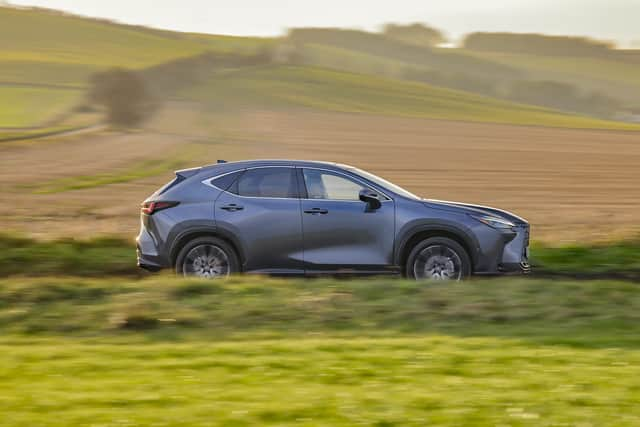

But what’s more important is the newcomer has a lower centre of gravity, thanks to its wider axle tracks, and a more rigid chassis. All of this combines to ensure the new NX feels more planted in corners. Oh, and there’s also a completely new interior, with the star of the show being its 14-inch infotainment screen. More on which later.
Engine and performance
The more powerful NX 450h+ plug-in hybrid, with its 40-mile range of all-electric driving, was launched last year. What he have here is Lexus’ “self-charging” petrol-electric hybrid. It’s a clever piece of tech, and further strengthens the Toyota/Lexus reputation for mastering the petrol-electric technology. Worth remembering that Lexus remains a hybrid stalwart. Every model in the range comes exclusively with electrified powertrains, apart from the V8-engined RC and LC sports cars.
The new 2.5-litre hybrid system is 25% more powerful than in the Mk1 NX — that means 241bhp total output that, with two electric motors working alongside, powers all four wheels via a CVT automatic gearbox — resulting in a 0-62mph time of 7.7 seconds, a top speed of 124mph and official economy of 44.1mpg.
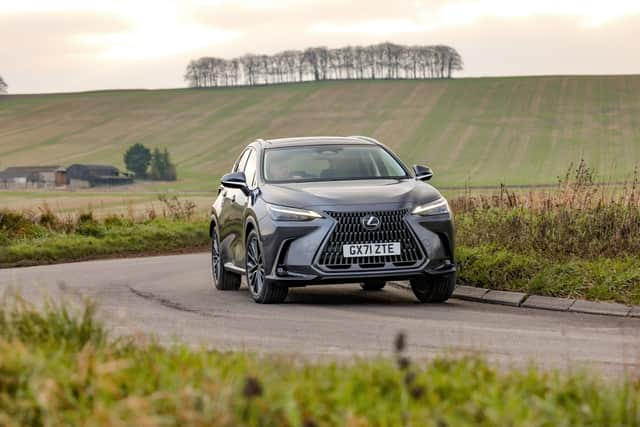

That economy doesn’t sound great but as we know, there are statistics, and damn statistics. And when it comes to fuel consumption in a hybrid, so much of what you get is a direct result of how you drive. There is a knack — balancing combustion-engined power with the hybrid electric — and once you get the hang of it, the official WLTP figures are beatable. On my 70-odd mile test run of mixed driving, I regularly exceeded 50mpg. When I parked at the end of the run, I had averaged a tad over 48mpg.
That’s diesel-beating efficiency around town, and it’s allied to a refinement which pretty much mirrors that of the very latest all-electric cars. It’s very silent at slow speeds, and the NX 350h’s ability to juggle its two power sources is impressive.
Interior
This NX is all-new and that means an all-new interior. And it’s excellent. Quality is top-notch. Some — specifically those fellow journos over 6ft tall — felt knee room in the rear, and and headroom, was on the tight side. Me? At 5ft 8in I could comfortably sit behind my driving position, and there was plenty of headroom. That, allied to the supportive and comfortable driver’s seat, confirmed the cabin was an enjoyable place to be.
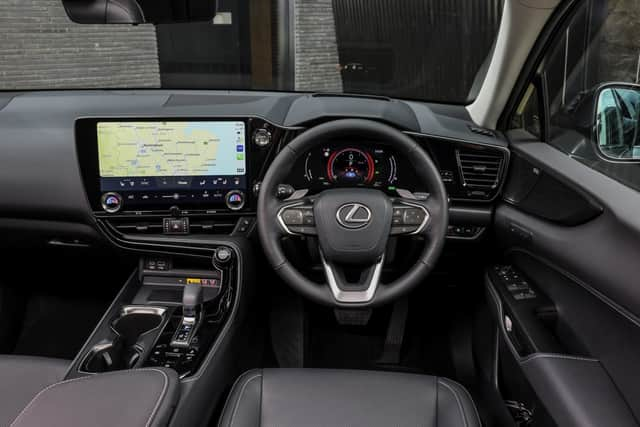

But while Lexus has long been past masters at fitting soft, squishy fabrics to the doors and dashboard, what really stands out in the cabin of the new NX is the fact the designers have addressed what, till now has been a huge weak point: say hello to the new Lexus Link Pro infotainment system. You can’t miss it. Positioned centrally and available with a 14-inch screen, it dominates the cabin. But it does so with a sleekness of style and design Tesla drivers can only envy. Gone is the frustrating, fiddly touchpad system of the previous NX generation, now replaced by a responsive, easy-to-operate touchscreen and voice command. Not only is it gloriously crisp and clear, but it’s even actually quite intuitive. And below the screen are big rotary dials for driver and passenger to control their own climate settings, plus simple touch controls for the fans. Joy of joys.
Price and specification
Advertisement
Hide AdAdvertisement
Hide AdThat Link Pro screen becomes standard once you step up to the Premium Pack, which is expected to be the biggest seller in the UK. However, the range, priced from £39,250, starts with the simple NX, which gets 18-inch wheels, heated leather seats, plus a a 9.8-inch infotainment system, albeit with Apple CarPlay and Android Auto fitted as standard.
The Premium Plus model, in turn, is one step up from the Premium which adds a head-up display, upgraded headlights, wireless charging, privacy glass, 360-degree cameras, keyless entry and 20-inch alloys to the entry NX spec.
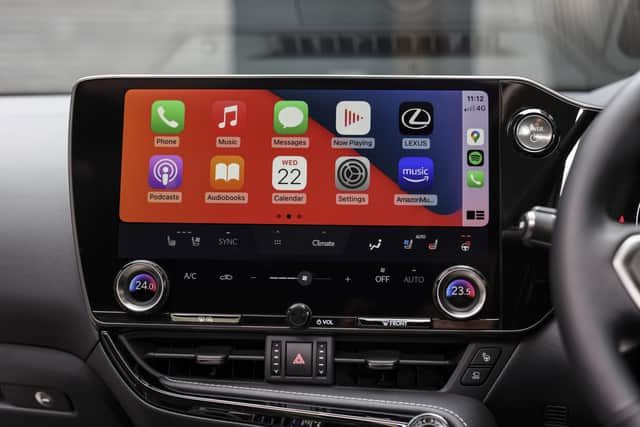

The F Sport trim, which I drove, with the E-Four all-wheel drive system, plus the Takumi Pack with sunroof, costs £54,800, includes sports seats, adaptive suspension, automated parking, a Mark Levinson stereoand Azure Blue paint was an additional.
Verdict
I would imagine the person who buys an NX — especially in F Sport spec — will do so because they know exactly what they want. The exterior styling makes a certain bold and positive styling statement. It looks dynamic, but doesn’t deliver huge dynamism to the driving experience. Instead it provides the driver and occupants with a comfortable, quiet, efficient and enjoyably luxurious cabin in which to travel. I get the feeling the NX driver will never be in a rush … yet they will always be the type of person who arrive 10 minutes before their appointment. They’re organised and controlled.
The NX delivers smooth drivability plus real-world efficiency and that, mated to new class-leading technology and its alluring cabin, ensures the latest self-charging petrol-electric Lexus NX hybrid will continue to be an attractive package.
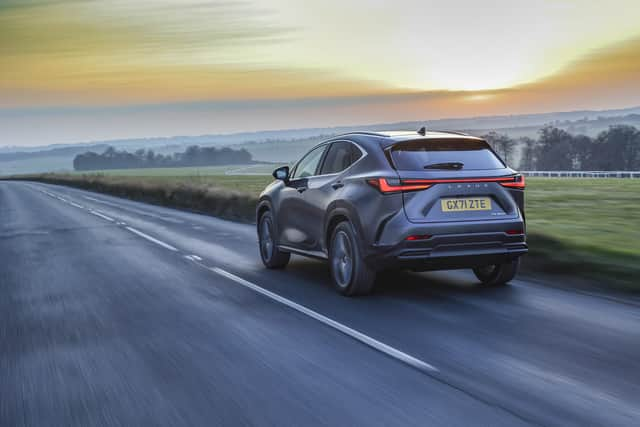

Lexus NX 350h F Sport AWDPrice: £54,800 (£55,720 as tested); Engine: 2.5-litre, four-cylinder, petrol plus two electric motors; Power: 241bhp ; Torque: n/a; Transmission: CVT automatic; four-wheel-drive; Top speed: 124mph; 2mph: 7.7 seconds; Economy: 44.1-47.9mpg; CO2 emissions: 133-146g/km
Comments
Want to join the conversation? Please or to comment on this article.